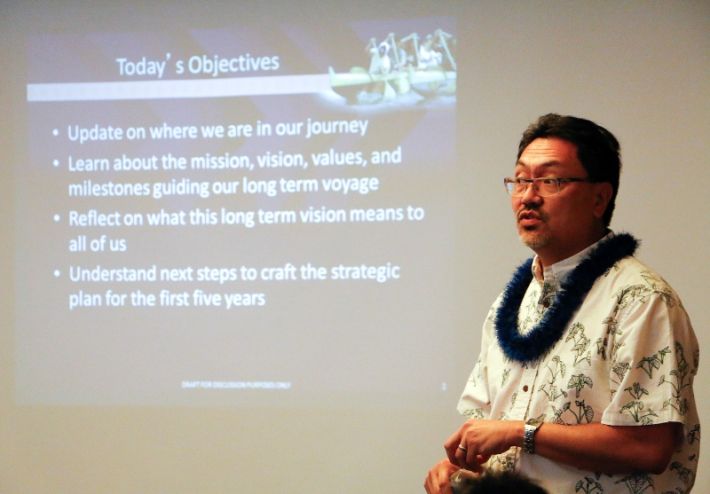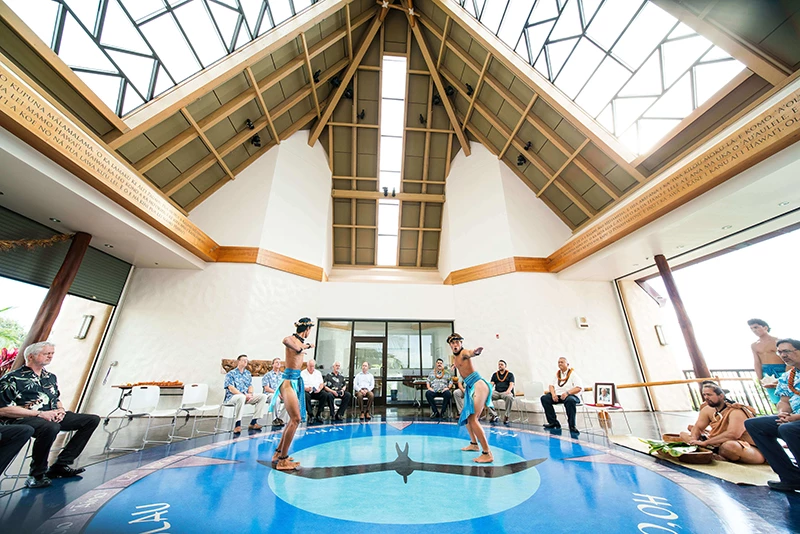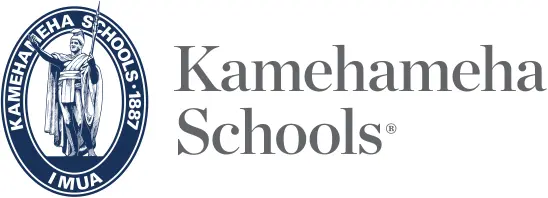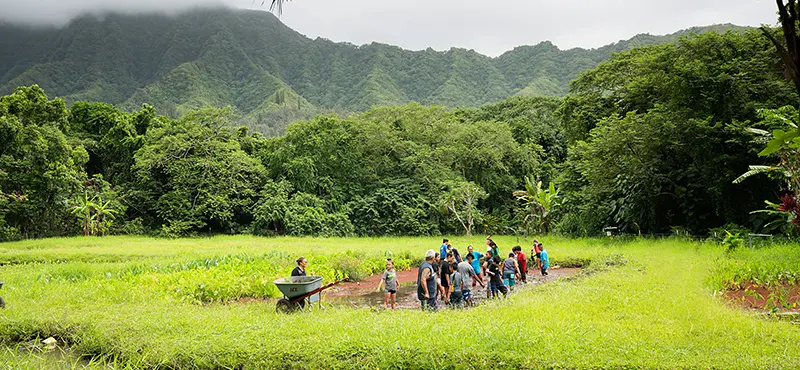As work continues to close out the Kamehameha Schools Strategic Plan 2000-2015 (SP2015), the process of charting the organization’s course for the next five, 15, even 25 years is well underway.
The third round of community stakeholder meetings and the second round of internal staff meetings wrapped up in early April.
To date, the planning process has included more than 42 forums on five islands and involved some 3,100 participants, more than half of whom were KS employees, and all contributing valued manaʻo about how KS might best move forward with its initiatives.
Kamehameha’s final round of staff and community meetings included 14 internal meetings across the organization and 13 external stakeholder meetings held on five islands. More than 1,800 people attended the final round of discussions.
Some of the common themes emerging from the planning meetings include:
- Strong support for the generational focus of the 25-year vision and that the vision was a clear vision for the future.
- The KS Strategic Plan 2000-2015 has provided a strong foundation and momentum to build upon.
- KS should continue strong emphasis on Hawaiian and Christian values.
- Partnerships, collaborations and communication and connection with community and collaborators are necessary to achieve post-secondary success in the Lāhui.
- Families are critical to the educational success of their children.
- Kamehameha Schools should be more than just a funding source, and continue its strong system of core values rooted in Hawaiian cultural identity, Christian beliefs, and stewardship of the ʻāina.
Built on the foundation of SP2015, Kamehameha’s Strategic Vision 2040 looks out a generation ahead and imagines a thriving Lāhui where learners are achieving post-secondary educational success, enabling good life and career choices; are leading and contributing to their communities, locally and globally; and are grounded in the Christian and Hawaiian values embraced by Ke Aliʻi Pauahi.
Planning for this vision began with preliminary discussions in October 2011 and has evolved into a comprehensive process with multiple rounds of information-gathering and deliberation, including the three rounds of meetings with community stakeholders, KS leadership, faculty, students, and staff.
“Leaders and community are united in seeing Kamehameha Schools as a world-class organization on par with the best educational systems around the globe,” said KS director of Public Education Support Dr. Shawn Kanaiaupuni, who is leading Kamehameha’s strategic planning efforts.
“As we strengthen our KS programs, we also seek to strengthen the quality of educational opportunities and outcomes in the broader education system that serves most of our haumāna by working with our community members and regional partners. We will be laser-focused in this effort to produce sustainable, transformative change toward a thriving lāhui.
“We mahalo participants at all levels for joining in the strategic planning process. The inclusive and extensive nature of the process means that the 2015-2020 Strategic Plan is something we all have kuleana to support and help forward.”
As the push toward this thriving Lāhui is undertaken, KS’ priority objectives are to focus on improving educational outcomes that correlate to post-secondary educational success, including six strategic milestones developed through the strategic planning process:
- Kindergarten readiness
- Reading at grade level or higher by third grade
- Academically prepared by eighth grade
- Graduating from high school on time and prepared for post-secondary education
- Enrolling in and completing post-secondary education and/or training
- Leading, contributing and civically engaged citizens
Other objectives include providing the highest quality educational experiences in comparison to the best the world has to offer; seeking opportunities to be supportive, cooperative and collaborative with partners who share Kamehameha’s vision; and operating as a high-performing, mission-driven organization.
The next step in the process now calls for Kamehameha leadership, faculty and staff to focus on how to best utilize organizational resources to move toward achieving Strategic Vision 2040 and creating a Strategic Plan for 2015 to 2020.
Subsequent strategic plans are expected to be created for each five-year segment of the vision, guided, at least initially, by strategies grouped in three main categories – Education, Financial Resources and Organization.
Current discussions include getting to more specifics about how Kamehameha Schools plans to serve its Native Hawaiian constituents, what type of organization Kamehameha wants to be, and how Kamehameha wants to best contribute to the greater community.
Look for more information specific to your campus, program, division or group in the weeks ahead as conversations get underway to connect the broad vision and planning objectives to the work the organization does now and to what Kamehameha will be focusing on over the next five years and beyond.
For more on Kamehameha’s Strategic Vision 2040, please visit KS’ strategic vision and planning website.
Related articles:
Planning for Strategic Vision 2040 moves into final phase
KS wraps up Round 2 of Strategic Planning process
Leaders and community are united in seeing Kamehameha Schools as a world-class organization on par with the best educational systems around the globe.
Dr. Shawn Kanaiaupuni, KS director of Public Education Support

KS trustee Lance Wilhelm greets forum attendees.

KS Kapālama stakeholders share their manaʻo.

A Windward Oʻahu strategic planning forum ends with a pule.

Dr. Shawn Kanaiaupuni, head of KS’ strategic planning team
TAGS
CATEGORIES
Kaipuolono Article, Newsroom, Strategic Plan
Print with photos
Print text only










